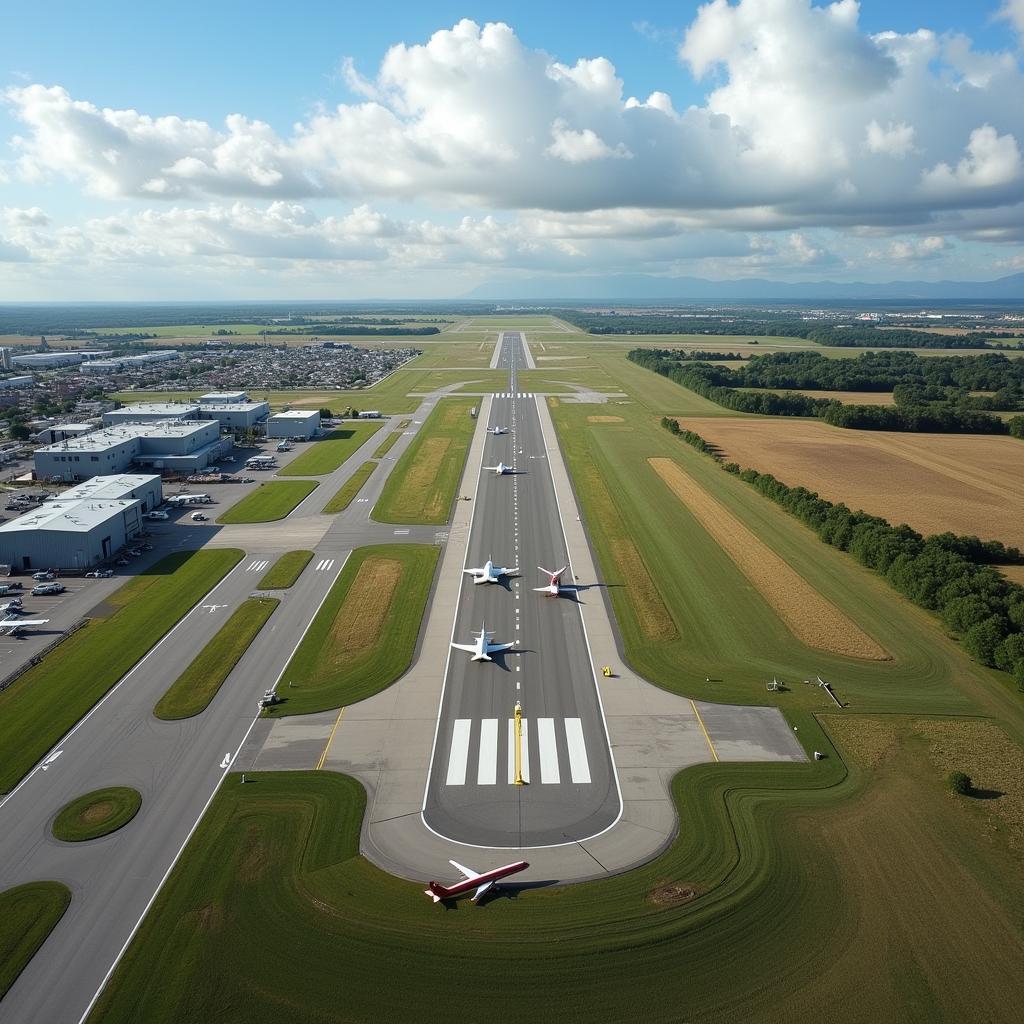Airports are more than just places to catch a flight. They are complex hubs of activity, categorized into various types based on their size, function, and the services they offer. Understanding the different Types Of Airports can be helpful for travelers and aviation enthusiasts alike.
Classifying Airports: Size, Function, and Services
Airports are classified using several criteria, often overlapping. These classifications help us understand their roles in the aviation ecosystem. One key factor is size, determined by factors like passenger volume, runway length, and the number of gates. Function also plays a vital role, with some airports primarily serving commercial airlines, while others focus on cargo, military operations, or general aviation. The range of services offered, such as customs and immigration facilities, further distinguishes different types of airports. Have you ever wondered what makes one airport different from another? Let’s delve into the specifics.
Airports by Size: From Small to Supersized
Airports can range from small, single-runway facilities catering to general aviation to massive international hubs handling millions of passengers annually. Here’s a look at the typical categories:
- Reliever Airports: These airports often handle general aviation and smaller aircraft, relieving congestion at larger commercial airports.
- Regional Airports: Serving a specific geographic region, these airports connect smaller communities to the larger aviation network. They often handle shorter-haul flights and smaller aircraft.
- International Airports: Equipped to handle international flights, these airports have customs and immigration facilities. They vary greatly in size, from smaller regional international airports to massive global hubs.
- Hub Airports: These are major airports that airlines use as central connecting points for their flight networks. They facilitate passenger transfers between different flights and often handle high volumes of traffic.
Airports by Function: Specialized Roles
Beyond size, airports also have specialized functions:
- Commercial Service Airports: These are the most familiar type, primarily serving scheduled passenger airlines.
- Cargo Airports: Focused on air freight, these airports handle the transport of goods by air. They often have large warehouses and specialized handling equipment.
- Military Airports: Used by the military for operations and training, these airports may also handle some commercial or general aviation traffic.
- General Aviation Airports: Catering to private aircraft, flight schools, and other non-commercial aviation activities.
Want to learn more about specific airport roles within India? Check out types of airports in india.
Understanding Airport Beacons: Visual Aids for Pilots
Airport beacons are crucial visual aids that help pilots identify airports, particularly at night or in low visibility. For more insights into the different types of beacons used, see our article on 3 types of airport beacons.
Navigating the Airport Landscape
Understanding the types of airports helps travelers choose the right airport for their needs, whether it’s a small regional airport for a short hop or a major international hub for a global journey.
What are the primary functions of a reliever airport?
Reliever airports primarily serve to reduce congestion at larger commercial airports by handling general aviation and smaller aircraft traffic.
“The classification system for airports provides a crucial framework for understanding the diverse roles these facilities play,” says aviation consultant Amelia Jones. “From small general aviation strips to sprawling international hubs, each type of airport serves a unique purpose in the global aviation network.”
 Aerial View of a Regional Airport
Aerial View of a Regional Airport
Interested in airport careers? Check out our resources on types of ground staff in airport and airport driver jobs. For more details about Indian airport classifications, you can refer to types of airport in india.
Conclusion: The Variety of Airports
Understanding the different types of airports, from their size and function to the services they provide, gives us a clearer picture of the complex world of aviation. This knowledge is beneficial for both seasoned travelers and those just starting to explore the skies.
FAQ
- What is the difference between a regional and an international airport?
- What is the purpose of a cargo airport?
- What are the different sizes of airports?
- What is a hub airport and why are they important?
- What is the role of a general aviation airport?
- How do airport beacons help pilots?
- What are some examples of reliever airports?
Common Airport Situations
- Delayed Flights: Check with your airline for updates and alternative arrangements.
- Lost Luggage: Report lost luggage to your airline immediately.
- Navigating a Large Airport: Consult airport maps and signage or ask airport staff for assistance.
Further Exploration
- Explore our articles on specific airport types for more in-depth information.
- Learn more about airport operations and management.
For any assistance, please contact us at Phone: +13089626264, Email: [email protected] or visit us at 404 Bothwell St, Oxford, NE 68967, USA. We offer 24/7 customer support.

